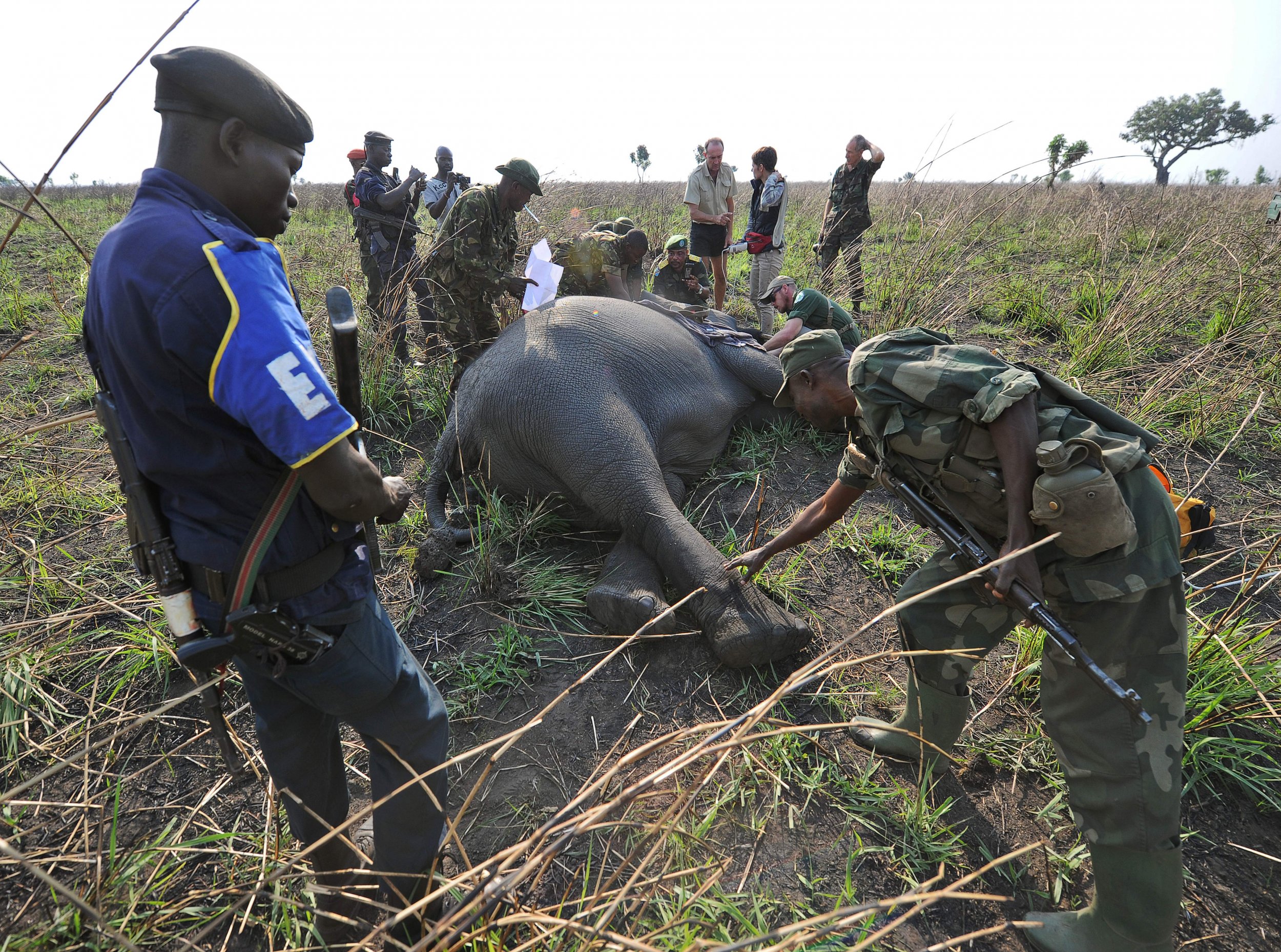
The Democratic Republic of the Congo is one of the poorest countries on earth, and is also home to unprecedented animal poaching. A new report by TRAFFIC, the global wildlife trade monitoring network, documents the largest problems facing the wildlife of the DRC. Among them are local poachers, pastoralist herders, and the Lord's Resistance Army.
Unfortunately for people and wildlife alike, 2012 didn't stop Joseph Kony, the leader of a guerrilla group that aims to "cleanse" the population and install a theocracy. His group, the Lord's Resistance Army, has been poaching elephants in advanced ways, such as by shooting them from helicopters. They transport the ivory north and sell it for money to buy weapons. Several other militarized groups poach animals to profit from illegal trafficking as well.
Another threat noted in the report is transhumanist pastoralist, or cattle herders who trek their bovines through private and protected properties. Conservationists consider migrating herders to be generally harmful to the environment, as the cattle eat and trample plants, and may spread disease to local animals. They also sometimes turn to poaching, as trading in illegal wildlife parts is often more lucrative than herding cattle. A study published in the African Journal of Ecology explains how cattle compete with and damage the populations of large wildlife, like elephants, buffalo and antelope.
A third threat to wildlife in Africa is local poachers, who kill legally protected animals for a variety of reasons. Some kill animals to protect their crops or to harvest meat. Surprisingly, some people even slaughter rare Kordofan giraffes just to get their tails, which are sold as fly-swatters to be used for dowries. The problem got so bad that in 2016, National Geographic reported there were only 40 left in the Garamba National Park, down 350.
However, at least the giraffes are doing a little better. Liz Williamson, a biologist who consulted on the TRAFFIC report, noted that the giraffe population has gone up slightly. Since then there have been seven giraffe births and no recent killings. Williamson cited the fact that many of the giraffes are wearing tracking collars as a possible reason for why they are doing better.
Uncommon Knowledge
Newsweek is committed to challenging conventional wisdom and finding connections in the search for common ground.
Newsweek is committed to challenging conventional wisdom and finding connections in the search for common ground.
About the writer
Kristin is a science journalist in New York who has lived in DC, Boston, LA, and the SF Bay Area. ... Read more
To read how Newsweek uses AI as a newsroom tool, Click here.








